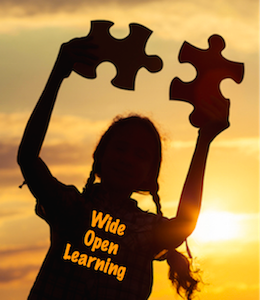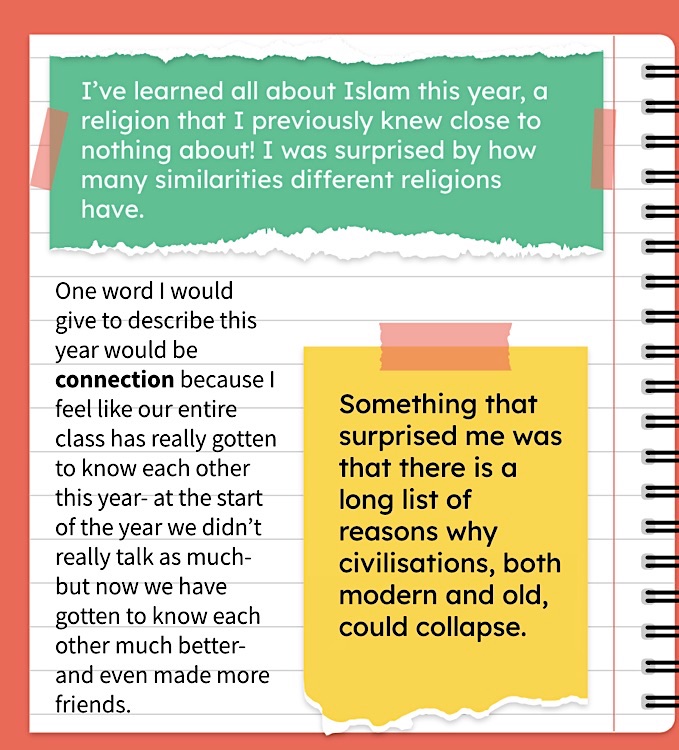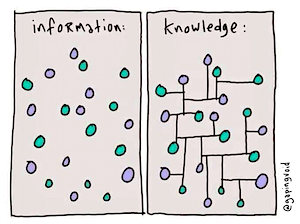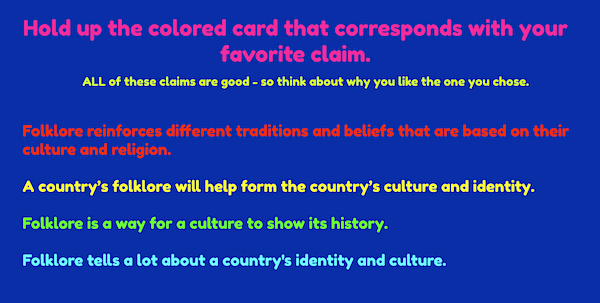My 3 Teaching Intentions for the New School Year
A MiddleWeb Blog

We have survived the final field trips, yearbook signings, assemblies, and tearful farewells. The weekend after school lets out, I have a last gasp of energy when I feel like I can plan for the year ahead, before I collapse for the summer.
I used that energy this year to set some intentions for the coming school year. These goals were based on student feedback, notes I made to myself as the year progressed, and the bookmarked articles I was finally getting a chance to read. By the time you read this, I’ll be putting intentions into action!
First, Make It Matter
In his TEDxYouth talk, Seth Godin says, “If it’s work, we try to figure out how to do less. If it’s art, we try to figure out how to do more.” I want students to feel like what they are doing is worthwhile. I can do this by helping them understand the importance of what we study. I teach in the most religiously diverse country in the world at an international school; I know why our World Religions unit is important. The next step is to make sure it matters to students and find the hook that inspires them to learn more.
►Things I already do
Their reflections tell me that the students find my class fun and the activities I plan engaging. We do breakout games, play board games that I modify to suit our content, and do frequent brain breaks. There is a difference between fun and important, though.

►Next steps
I want to help students find their connection to the content and shape our assignments so that they can find the answers to the questions that matter to them. Their work will look different because their interests will be different. I also need to help students who don’t have a natural affinity for a topic find their connection. One thing I envision creating is a Google site with lots of resources and possible points of relevancy to a topic that students can take some time to explore and see if there is anything that piques their interest.
Involve Families More
The families of my rising sixth graders are accustomed to one point of reference who knows their child really well. It’s a big transition as their children enter middle school with eight or more teachers who have over 100 other students. We’re fortunate to be a school with a highly active parent community who are looking for ways to support, and any planning teachers do needs to keep that in focus.
►Things I already do
Students email their families every three weeks with an update on what we are studying, and they get to choose from a list of questions they’d like their grown-ups to ask them. At the start of each unit, I send an email with an overview of what we will study, as well as questions families can discuss. This email is translated into Chinese, Japanese, and Korean. I occasionally send my advisees’ families photos of them during small moments at school.
►Next steps
I’d like to get families into our classroom more. We are moving our study of world religions to the beginning of the year, and the adults in my students’ lives have so much wisdom to share on this topic. I’d also like to do a “mid unit check-in” with families – letting them know how their students are doing.
Track Their Growth
We have student led conferences twice a year, and the days before the conferences take place usually involve reflection around what students have learned. I would like for the reflection to be ongoing and not motivated by a conference, but rather by a desire to improve. This is a way for us to celebrate as we go, and also for students to always know what skills they are sharpening.
►Things I already do
I give feedback frequently and quickly, so the students should know how they are doing (if they read my comments). I post student exemplars in the classroom and on our unit slides. We do an activity where students have four different colored cards. I show four anonymous student claims on a slide and explain that they are all good. Students hold up the colored card for their favorite, then discuss their reasoning with their table mates. We do this frequently enough that students see all kinds of claims and everyone has their moment to be an expert claim writer.
►Next steps
We will do more frequent and specific reflection. This might involve keeping track of their best writing, down to the sentence level. It could be more intentional rubric discussions. I could use Chat GPT to create some writing samples with intentional errors and ask students to identify and improve them.

This could be done through a hexagonal thinking exercise (Cult of Pedagogy) or even just included in the family emails I mentioned before. I have the image here from Gaping Void posted in my classroom; students could modify it to be a reflection on what they have learned.
Narrowing Down My Goals
At times we can be overwhelmed by all the new things we want to try in a year. By narrowing my goals down to these three areas of practice, I can stay focused and ask peers and students to hold me accountable. When I want to dive into a new initiative, I can reflect and see if it supports the work I am trying to do this year. If you have suggestions that relate to these goals, or goals of your own, please share.































